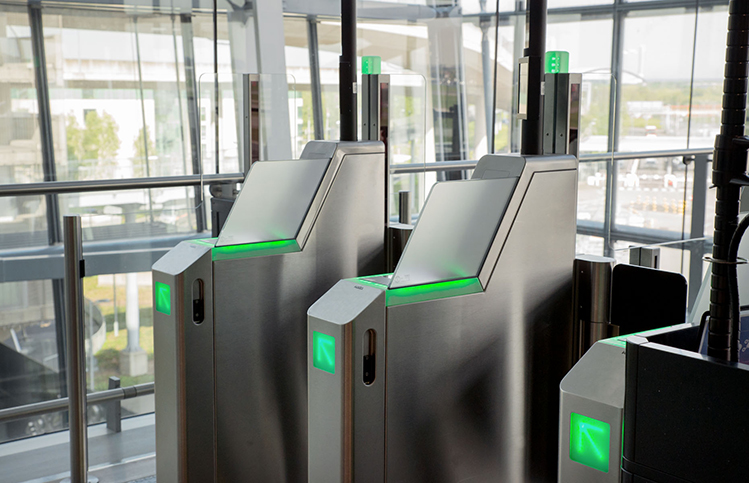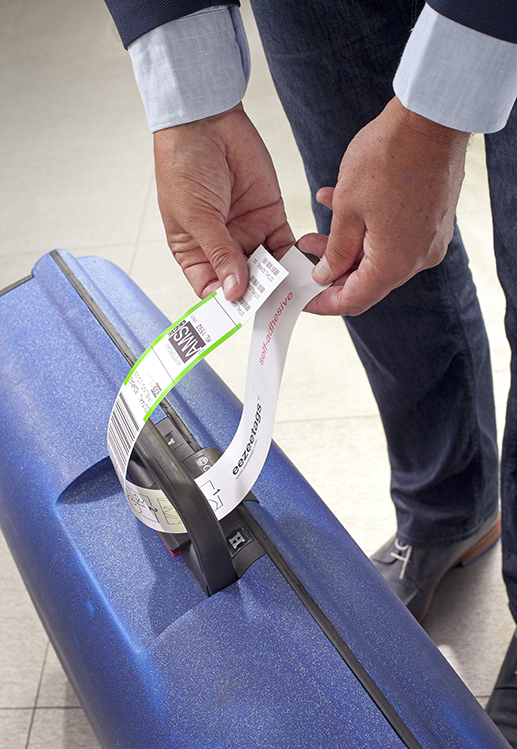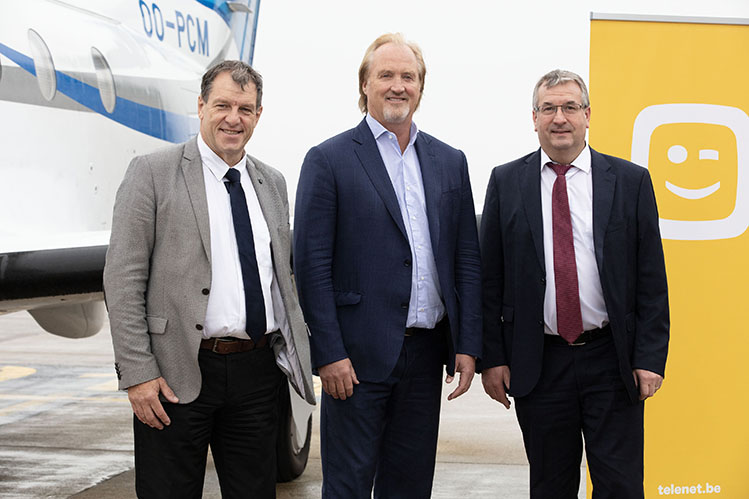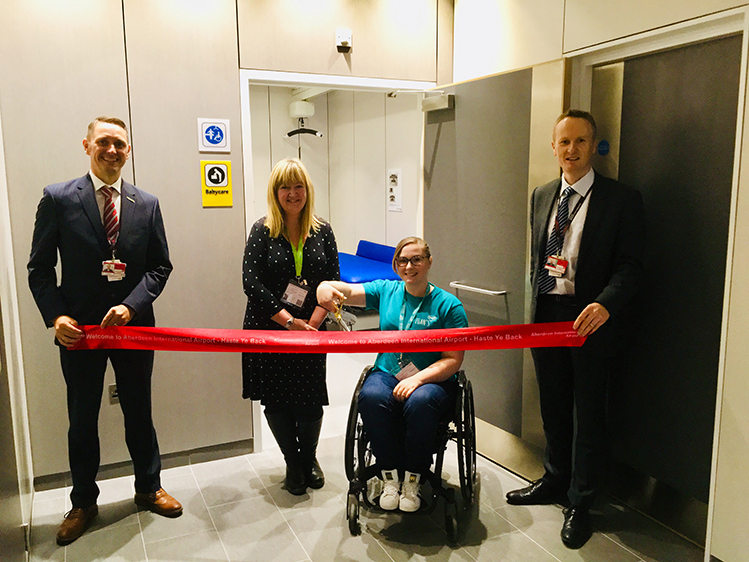End-to-end biometrics, Internet of Things-based solutions, and virtual reality entertainment provide further evidence of the progressive approach to the passenger experience being taken among Europe’s airports. By Ryan Ghee
Heathrow outlines plans for industry’s largest end-to-end biometrics roll out

The biometric technology project will streamline the passenger journey through Heathrow from check-in to take-off, and is expected to reduce the average passenger’s journey time by up to a third.
Heathrow Airport has announced plans for a full-scale roll out of new biometrics services from summer 2019. The technology will streamline the passenger journey through Heathrow from check-in to take-off, and is expected to reduce the average passenger’s journey time through the airport by up to a third.
The biometric solution uses facial recognition technology at check-in, bag drops, security lanes and boarding gates to create a seamless experience for passengers. The £50 million (€57m) project is part of a wider programme of investment to streamline passenger journeys and once complete will mean that Heathrow will have the world’s largest deployment of biometric products in an airport.
The long-term aim of the technology will be for passengers to be able to walk through the airport without breaking their stride. Passengers have already been trialling new services in live operation throughout 2018 and feedback has been positive.
Heathrow has already begun using biometric e-gates in some stages of the passenger journey, including on entry to the UK at the border. The technology is also used for domestic journeys through the airport, but this will be the first time that Heathrow will use the technology at every stage of the departing passenger’s journey. The project also has the potential to allow for greater personalisation of passenger services, which is especially useful for passengers requiring additional assistance.
“As our passenger numbers continue to grow, we must look for innovative ways to make it easier and quicker for them to travel through Heathrow with choice, whilst keeping our airport secure,” Jonathan Coen, Customer Relations and Service Director, Heathrow Airport, said. “Biometrics are key to helping us do that and we are really excited about the biggest roll out of this equipment at any UK airport.”
New tool measures the gains of eezeetags’ self-tagging

eezeetags has created a calculating model called the ‘eezeetags-o-meter’. The tool is based on data provided by eezeetags’ customer airports on their daily bag drop operations.
This year, approximately 65 million travellers will use an eezeetag to self-tag their bag. eezeetags now serves over 50 airports of all sizes worldwide, as well as traditional airlines and low-cost carriers. New customers include Bangalore Airport, Gimpo Airport, and Taoyuan Airport.
“We just prolonged our Lufthansa contract for another two years, and the airline is going to invest in extra self-service bag drop installations,” adds Borry Vrieling, founder and Managing Director, eezeetags. “Plus, extra self-service installations at Amsterdam Airport Schiphol are increasing demand for eezeetags.”
The growing number of passengers using the self-tagging solution means more data is becoming available, which Vrieling explains has been used to create a calculating model called the ‘eezeetags-o-meter’. The tool is based on data provided by eezeetags’ customer airports on their daily bag drop operations.
“The ‘eezeetags-o-meter’ measures the gains made by using eezeetags over a more standard tag with a liner,” says Vrieling. “We found that, on average, travellers are 20 seconds faster tagging a bag with eezeetags compared to a standard tag.”
The model is based on four rules:
- 20% of passengers will not be ‘self-service qualified’ for various reasons
- 80% of passengers can use self-service applications provided
- 65% of passengers drop a bag to be checked-in as hold baggage
- 20 seconds per passenger can be gained on the actual tagging process
“In the end, the calculations are easy to make, but the outcome is astonishing. What a difference only 20 seconds per passenger can make – it still amazes me,” Vrieling comments.
Brussels-Charleroi to adopt IoT in bid to become a true “digital dome”

Jean-Jacques Cloquet, CEO Brussels South Charleroi Airport; John Porter, CEO Telenet; and Pierre-Yves Jeholet, Minister of Economy & Digital.
Brussels South Charleroi Airport (BSCA) has announced a new strategic partnership with Telenet to enable the development of solutions based on the Internet of Things (IoT).
The five-year collaboration aims to make Brussels-Charleroi a true “digital dome”. Its main objective is to optimise the running of the airport and to improve the passenger experience from home to boarding gate, by utilising digital solutions such as smart parking, optimised Wi-Fi network, and the analysis of visitor location data. The partnership will also enrich the CRL Airport app, which was launched last June. The application is poised to become the heart of the passenger experience, and a source of essential data for the airport.
“It’s important to us to facilitate the journey of people passing through our installations and now, thanks to Telenet, we can help them from their home to the plane,” said Jean-Jacques Cloquet, CEO Brussels South Charleroi Airport. “Becoming a connected airport was one of our priorities, and now we have the first stone that will allow us to build the BSCA digital dome, for a most pleasant passenger experience.”
Star Alliance trials virtual reality entertainment in CDG and FCO lounges

The Inflight VR headsets will be trialled in Star Alliance lounges in Paris and Rome over a period of three months.
Guests in Star Alliance lounges at Paris-Charles de Gaulle (CDG) and Rome Fiumicino (FCO) airports can trial virtual reality (VR) entertainment up until the end of January 2019.
Using headsets provided by Inflight VR, guests can enjoy fully immersive video content, including short films and documentaries, and experience exotic destinations in virtual reality. The devices also offer children’s content and specially created content to help travellers relax, such as guided meditation.
“We are very pleased to see Star Alliance interested in offering its guests the benefit of virtual reality in their lounges,” said Moritz Engler, CEO Inflight VR. “This is a further demonstration of the versatility of our product, which can be similarly used in the air and on the ground.”
Following the three-month trial, Star Alliance will assess user feedback and consider whether to pursue a permanent deployment with Inflight VR.
Aberdeen Airport opens Changing Places facility

Kevin Douglas, Terminal Operations Manager; Phionna McInnes of Me Too! Magazine; Vicky Cruickshanks of Euan’s Guide; and Fraser Bain, Airport Duty Manager.
The latest phase of Aberdeen International Airport’s terminal transformation project is its new Changing Places facility. Located within the departures lounge, it aims to make travel a little easier for those who find travel challenging.
Included within the Changing Places room is a height adjustable bench, electronic hoist, non-slip floor and privacy screens. The facility can be accessed without the need for a key, and is alarmed should any passengers require assistance.
The airport has been working with the community to improve accessibility and inclusiveness, and was given a ‘very good’ rating in the UK CAA’s most recent Accessibility Study.
The airport also has its own Access Forum, a group made up of airport representatives and members of various disability organisations and charities.
Vicky Cruickshanks, an ambassador of Euan’s Guide, a disabled access review website, was on hand to open the facility alongside Phionna McInnes from Me Too Magazine!, the Aberdeen-based charity for children with additional support needs and a member of the Access Forum.
“This new changing facility will make a huge difference to those individuals and families with additional support needs when flying from Aberdeen,” said Fraser Bain, Airport Duty Manager. “We work closely with our Access Forum members to understand the key priorities and we always seek feedback regarding our services and facilities to continue to improve the passenger experience, of which Euan’s Guide is one example.”







